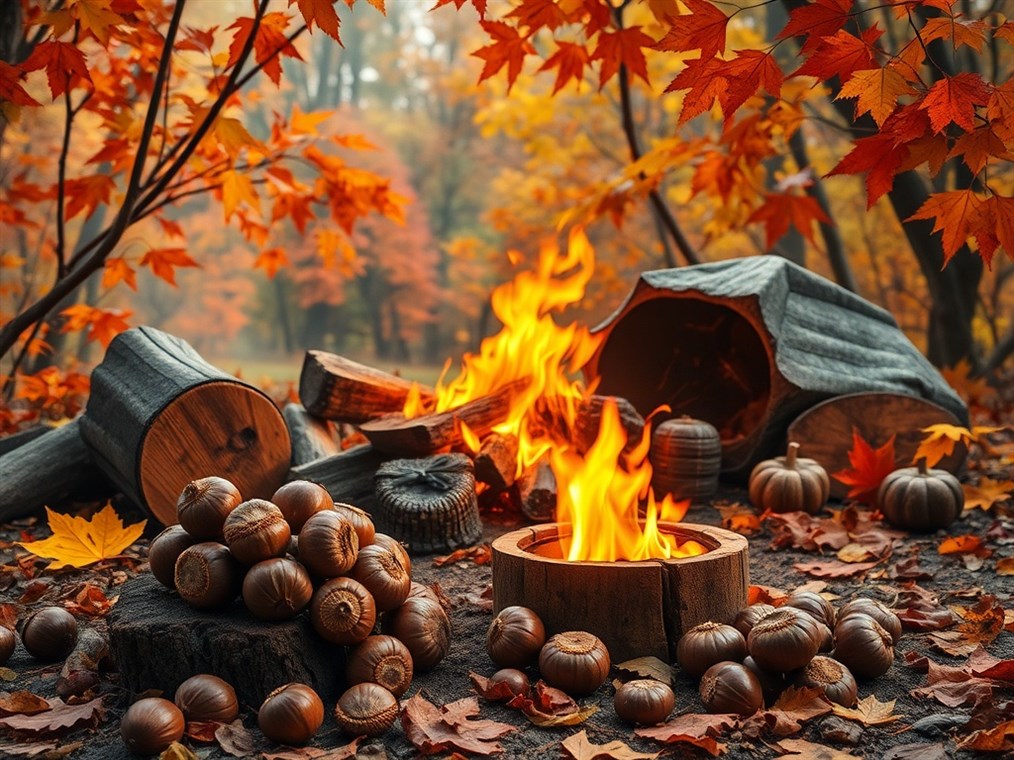So, You Think You’ve Found a Chestnut? A Guide to Avoiding Nutty Mishaps
Chestnuts. Just the word conjures up images of crackling fires, holiday gatherings, and that distinctive, sweet, nutty flavor. But here’s a little secret: not everything that looks like a chestnut is a chestnut. Confusing, right? Sadly, some imposters can cause more than just disappointment – they can actually make you sick. Let’s dive into how to tell the real deal from the fakes, so you can enjoy those roasted chestnuts worry-free.
The Real McCoy: True Chestnuts (Genus Castanea)
When we talk about edible chestnuts, we’re talking about trees in the Castanea family. Think of them as the “first family” of chestnuts. There are four main members you should know:
- American Chestnut (Castanea dentata): Oh, the American chestnut. Once upon a time, these giants ruled the Eastern forests. Then came the chestnut blight, a real tragedy that wiped out most of them. You might still see sprouts popping up from old roots, clinging to life. The nuts are small and sweet, and thankfully, pretty easy to peel.
- European Chestnut (Castanea sativa): These guys are the Europeans, also known as Spanish chestnuts. They’re grown all over Europe, not just for their tasty nuts but also for their timber. Interestingly, they come in two main types: “marrons,” which are big, sweet, and peel like a dream, and “castagna” or “chataignes,” which are smaller and a bit more stubborn when it comes to peeling.
- Chinese Chestnut (Castanea mollissima): The Chinese chestnut is a real survivor. It’s resistant to that nasty chestnut blight, which is why you see it planted in the US these days. The nuts taste great, and the skin inside is usually pretty cooperative and peels off easily.
- Japanese Chestnut (Castanea crenata): These chestnuts are big, I mean really big. The only downside? That inner skin can be a pain to remove.
And hey, there are other edible Castanea species out there too, like the Seguin chestnut, Ozark chinkapin, dwarf chestnut, and Henry’s chestnut. It’s a whole chestnut world!
The Sneaky Look-Alikes: Horse Chestnuts and Buckeyes
Now for the villains of our story: horse chestnuts (Aesculus hippocastanum) and buckeyes (various Aesculus species). These guys are the masters of disguise. They look so much like chestnuts, but they’re actually toxic. Seriously, don’t eat them. They belong to the soapberry family, which is not related to true chestnuts.
Spot the Difference: Your Cheat Sheet to Chestnut ID
Okay, so how do you tell these guys apart? It’s all about paying attention to the details. Here’s your guide to becoming a chestnut detective:
- The Burr (That Spiky Shell):
- Real Chestnuts: Imagine a fuzzy green sea urchin. That’s what a chestnut burr looks like, covered in tons of pointy spines.
- Horse Chestnuts/Buckeyes: Think of a spiky golf ball. The husk is thick and leathery, with fewer, more spread-out bumps or stubby spines.
- The Nut Itself:
- Real Chestnuts: Usually, they have a pointy tip, almost like a little tassel. And they often hang out in groups of two or three inside that burr.
- Horse Chestnuts/Buckeyes: These are round and smooth, no point in sight. Usually, you’ll only find one nut inside the husk. Plus, they’re bigger and shinier than the good stuff.
- The Leaves:
- Real Chestnuts: Simple leaves, long and skinny, with jagged edges. The little teeth along the edge curve towards the tip.
- Horse Chestnuts/Buckeyes: These have palmate leaves, which means they look like a hand with 5-7 “fingers” (leaflets) all coming from one spot.
- The Flowers:
- Real Chestnuts: American chestnut flowers are late bloomers, showing up around July 4th. They’ve got both male and female flowers, often on the same cluster. The male flowers look like long, dangling catkins.
- Horse Chestnuts/Buckeyes: These flowers are eager beavers, blooming early in the spring. They create these big, showy cones of white flowers that point straight up from the branch.
- The Tree:
- Real Chestnuts: American chestnuts used to be forest dwellers, part of the natural landscape.
- Horse Chestnuts/Buckeyes: You’ll often find these planted as ornamental trees in cities, parks, and even your neighbor’s yard.
When in Doubt, Don’t!
Seriously, if you’re not 100% sure what you’ve got, don’t eat it. It’s just not worth the risk. Snap some pictures of the leaves, the burr, and the nut, and ask someone who knows their stuff. A botanist or arborist would be perfect.
Uh Oh, I Ate a Horse Chestnut! Now What?
Okay, don’t panic. But keep an eye out for these symptoms:
- Tummy ache
- Feeling queasy
- Throwing up
- A scratchy throat
If you start feeling any of these, get medical help right away! Call a poison control center; they’re the experts.
The Bottom Line
Horse chestnuts and buckeyes might try to fool you, but with a little know-how, you can easily tell them apart from the real deal. So go forth, be a savvy chestnut hunter, and enjoy those delicious roasted nuts with confidence!

